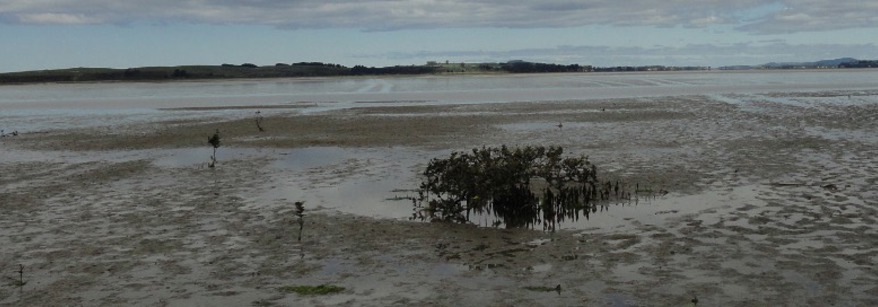No vehicle use (unless for emergency or law enforcement purposes) in Indigenous Biological Diversity Area A (IBDA A) in the coastal marine area. This is all areas coloured burgundy with diagonal stripes on the Proposed Regional Coastal Environment Plan v9.0 maps below.
In other areas, vehicles can drive on the foreshore (area below spring high tide - the "wet", firm sand part) for these activities:
- Surf life saving operations.
- Emergency situations like fire-fighting, oil spills, rescue operations, salvage of vessels and sea mammal strandings.
- Burial of dead animals by the Department of Conservation or local council.
- Launching or retrieving vessels.
- Transporting recreational equipment to the water's edge.
- Coast Care and Estuary Care projects (unless part of mangrove management activities).
- Defence Force activities (prior notice must be given to Bay of Plenty Regional Council, the Department of Conservation and adjacent territorial authorities).
- Certain projects carried out by local councils, Government, and educational institutions. For example:
- Monitoring and data collection
- Maintenance of infrastructure and facilities
- Law enforcement activities
- Beach grooming
- Removal of litter.
- Use of land yachts.
- Setting up and running temporary recreational events (that are permitted by Rule SO 1).
- Access for people with disabilities.
Otherwise vehicle users need a consent from Bay of Plenty Regional Council.
For more information, please refer to Rules DD 7 & 8 in the Proposed Regional Coastal Environment Plan.
For information on what to do if you see a vehicle breaking these rules, please see below point on making a complaint.
Remember - The rules that apply to vehicles on the road (obey the speed limits, no drink driving etc.) also apply to vehicle use on the beach. The police can enforce these rules on the beach the same as on a legal road.
Vehicles on Beaches - Local Rules
District and City Councils also control vehicle use on beaches. Follow the links below for the relevant rules and information about vehicles on beaches in your district:
Tauranga City Council (TCC)
Vehicles and horses on beaches in Tauranga City
Quadbikes may be driven on the beach with the permission of Tauranga City Council, and provided they use the vehicle access point between 105 and 107 Karewa Parade.
Western Bay of Plenty District Council (WBOPDC)
Rules for beaches from Te Puru creek north of Waihī Beach to Otamarākau, minus the Tauranga City Council area (please refer to Section 10 of the bylaw).
Vehicle access is largely permitted in WBOPDC reserves at current vehicle access points or if the appropriate permit has been received for vehicle crossings. There are exceptions to this rule:
Vehicle access is restricted in the following locations:
- Three Mile Creek reserve
- Waihī Beach Surf Club reserve
- Kauri Point scenic reserve
- Levley Lane reserve and accessways
- Huharua
- Park Road reserve (Katikati Ward)
- Pukehina Ocean reserves (Maketū Ward)
- Seabreeze Park (Maketū Ward).
Whakatāne District Council (WDC)
Rules for beaches from Otamarākau to Ōhope Spit
The WDC Beaches Bylaw 2008 largely prohibits the use of vehicles on beaches (apart from emergency service vehicles), unless prior permission is granted by Council.
Vehicle use is also restricted on Biodiversity Sites BS67A Ōhope Spit and BS71A Otamarākau-Matata-Whakatāne Dunes shown on Planning Maps 106A, 107A, 125A, 127A, 505A and 506A. This restriction is in place between 1 September and 31 January. It is for the protection of nesting birds and there will be signs set up at the beaches with this restriction.
Ōpōtiki District Council (ODC)
The Ōpōtiki District Council Consolidated Bylaws 2021 outlines the rules around vehicle use on beaches. More details can be found under Part 4 ‘Beaches’ section, page 31 onwards. Maps of these vehicle prohibited zones can be found in Schedule 1 of Part 4: Vehicle prohibited areas, page 34-38.


